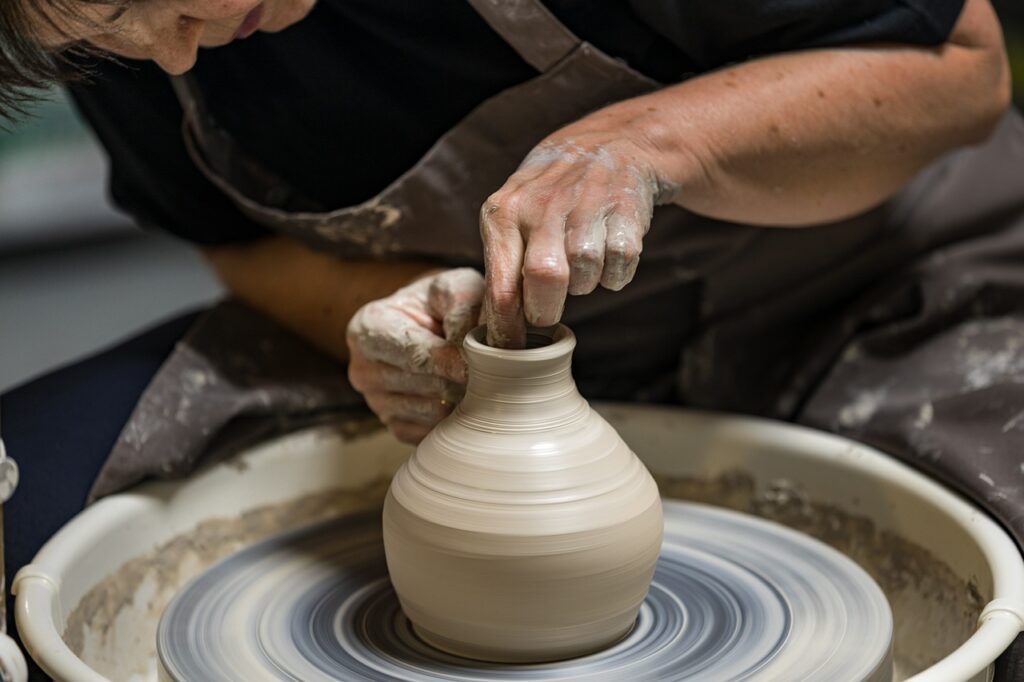And How to Harness Those Gains

If you’re like me, you have so many writing goals that you might feel as if your life is a never ending string of to-dos. After all, we’re artists. Our minds are constantly full of new story ideas that we can’t wait to put on the page. But if we’re so busy churning out the next story that we have no time for creative play, we might be losing out. It’s possible to do so much work that the quality of our creative endeavors goes down. When you discover the benefits of creative play, you’ll see why this is one thing we need to make time for.
The Benefits
Before we get into how we can foster creative play in our lives, let’s look at three of its greatest benefits to us as writers.
Creative Play Improves Our Brain Function
According to Luminis Health and many others, creative play isn’t just for children. Even though much of our brain function is developed between birth and our late twenties, there’s still room for growth well into our senior years. Studies show that adults who play continue to strengthen their minds by preventing memory problems, increasing productivity and building problem-solving skills.
Consider all of the inventive ways we write our characters into and out of desperate situations. Not to mention the complex worldbuilding and our understanding of linguistics, pacing, and tension that come into play every time we work on a story. We need our minds to be in tip-top shape. Creative play helps us produce higher quality work more efficiently.
Creative Play Exercises Our Creative Muscles
Maya Angelou once said, “You can’t use up creativity. The more you use, the more you have.“

There’s a fundamental truth in this statement. The act of creating anything opens the door to greater capacity. Think of your creative center as a powerful river held back by a dam. As we create, we’re drilling through the dam and releasing some of the water. The more we do this, the more water we discover.
Your creative soul contains more creative ideas than you can imagine. The key is to unlock them. One of the greatest benefits of creative play is its ability to silence our inner critic. Whereas that critic is crucial to our rewriting process, it’s death to the initial creation. When we play, we train our minds to relax and create without judgement.
Creative Play Opens Us to New Possibilities
Sometimes, when we’re so busy writing that we think we don’t have time to play, we don’t realize that we’re actually stuck in a rut. A rut we might call the status quo. It’s easy to keep on the same track and harder to leave the well-worn road for new creative vistas.
Creative play stops us and forces our minds to build new neural pathways. These new mental tracks strengthen our ability to think in ways we couldn’t before. Whether it’s an entirely different approach to character development or a fascinatingly novel story idea, creative play opens our minds to the uncharted course.
How to Go About It
If we want these things – a stronger mind, deeper well and broader creative abilities – we can benefit from creative play. But what is it? And how do we go about it?
What Is Creative Play
We should think about creative play as the act of creating something without any end in mind (other than the improved writing we hope to see after the fact). That means that we have no intended audience or economic gain that we’re pursuing. We aren’t trying to improve our home’s value or start a ceramics business although those things may be unintended and desirable consequences of our play. We aren’t learning an instrument because we long to apply to Juilliard.
We’re just playing. Imagine yourself as a young child faced with a room full of options: putty, paint brushes, mixed materials, fabric… you name it. The play begins and ends with your experience with the material and the interaction that your five senses have with it.
How to Pursue Creative Play
Choose a medium and set out to do something with it. There’s no pressure to create something grand or impressive. Simply take up a paintbrush or drawing pencils and create a scene; or build sculptures from clay or river rocks; or dabble in the kitchen with a new type of cuisine; or experiment with a new musical instrument.
I have found certain types of crafts that are creative but routine (like a Diamond Dotz kit) to be very helpful. Often, while doing the craft I find my mind problem solving or working through an aspect of the novel I’m writing.
Helpful Guidelines
That said, I have found several guidelines (not rules, just guidelines) to be helpful:
- Set aside a little time weekly or daily if possible. The goal isn’t to spend all of our time playing, but rather to enhance our writing. If you have the benefit of being able to write full time or for several hours each day, try playing at something creative for 30 minutes beforehand. Set a timer, pick up your choice of medium and be free. Then set it down and return to your writing. If you can only write for an hour a day, find something like an adult coloring book or a puzzle that you can pick up for ten minutes and then put away. (I know… it’s hard to put it down.)
- Try to mix it up and experiment with different types of play. For example, try drawing one day and building a miniature house the next. If you find that painting opens your creative well most effectively, pursue that the most, but don’t overlook the benefits of playing at something different on occasion. And don’t forget about other sensory experiences like an autumn walk to collect fall leaves for rubbings or picking wildflowers by a lake.
- Pursue things that you love. Children are largely unrestrained. They don’t sit down to play at those things that think they should love. Or the things that they think others will find most interesting. Instead, they play at what interests them most. Allow yourself to be fascinated by things again, to find wonder and beauty in creative areas of life. Maybe you’re obsessed with hand painting miniature figurines. Perhaps you’re driven by the color and patterns in quilting. What excites you?
- Be honest about what helps you the most. As I mentioned above, I’ve found certain crafts to be very helpful and others, not so much. If you go for a walk and come back to find your mind unfocused, perhaps that’s not something you should pursue as a creative catalyst. But if you spend the afternoon baking for a potluck and then discover that your creative juices are pouring out of you, that may be one useful avenue. (Your friends and relatives will love that!) Perhaps a healthy mix keeps your writing mind fresh.
Conclusion
What we’re really doing is quieting the responsible side of our brain that keeps telling us that we should check something else off the list; or that we should edit that character’s comments before moving on in the story; or that audiences don’t want to see that kind of story. We’re training our minds to open to the well of our experiences and deepest loves so that when we come back to our writing, we can tap into that well without hindrance.
Creative play is one of the means of doing that. Try it. Give yourself the freedom to create and to see the wonder of what really speaks to you. And let yourself explore both in your creative play and in the writing that it fosters.
And tell me how it works for you!
If you enjoyed this article, share it with your friends!